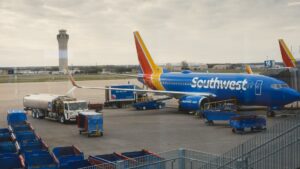Southwest Airlines Streamlines Operations: What You Need to Know
At Extreme Investor Network, we pride ourselves on delivering timely business news and insights that matter. Today, we’re diving into a significant development in the airline industry that could impact not only employees but also investors and travelers alike.
Southwest Airlines Takes Major Steps in Cost-Cutting
In a move that reflects the ongoing challenges within the airline sector, Southwest Airlines has announced the closure of its satellite flight attendant bases at Fort Lauderdale-Hollywood International Airport (FLL) in Florida and Austin-Bergstrom International Airport (AUS) in Texas. This decision comes as part of a broader cost-cutting strategy, marking the first instance of mass layoffs for the airline in over 50 years of operation.
According to a memo from the flight attendant union, TWU Local 556, the official closure will take effect on July 1, giving the 280 affected flight attendants an additional month to adjust either personally or professionally. Union President Bill Bernal stated, “While the Company is within its rights to make this decision, it is not without impact on Flight Attendants,” highlighting the human element amidst corporate restructuring.
The Bigger Picture: Why This Matters
Southwest initially opened these standalone bases back in 2018, aiming to enhance operational efficiency and crew distribution across the country. However, as the airline adjusts to a post-pandemic market and settles a recent deal with activist investor Elliott Investment Management—who now holds five board seats—the focus has shifted towards achieving profitability. This shift has led to the elimination of unprofitable routes and a workforce reduction of 1,750 positions, or about 15% of its corporate staff, projected to save the airline approximately $210 million this fiscal year.
The closures of the Fort Lauderdale and Austin bases are indicative of a larger trend affecting the airline industry as companies strive to adapt to evolving market conditions, heightened competition, and fluctuating consumer travel habits.
What’s Next for Southwest Airlines?
In a statement, Southwest Airlines has expressed confidence that these operational changes will bolster the overall reliability of its service for both employees and customers. “This change will ultimately help strengthen our Crew network,” said a spokesperson from the airline.
For investors, it’s essential to watch how these structural adjustments will affect the airline’s financial health and stock performance in the coming quarters. Given the landscape’s volatility, potential shareholders should consider Southwest’s new direction as a critical factor in their investment strategy.
Final Thoughts
At Extreme Investor Network, we understand that our audiences are looking for more than just news; they seek context on how these developments affect their investments and what trends they should be tracking. The decisions made by Southwest Airlines reflect broader industry shifts and reveal how traditional business models are facing pressures needing realignment.
Stay tuned with us for more updates and insights that will empower you in your investing journey. Understanding the intricacies of these corporate decisions could be crucial as you navigate your investment path in these evolving markets.
Join the conversation—what are your thoughts on Southwest Airlines’ moves, and how do you see this influencing the airline industry at large?

